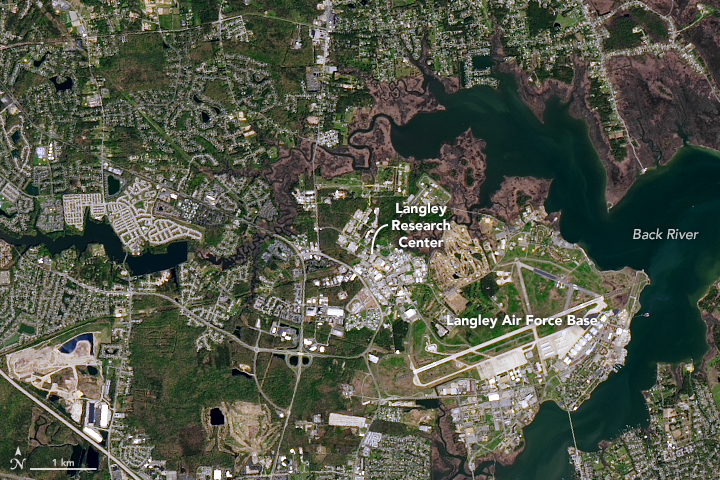


Something happened 100 years ago that changed forever the way we fly. And then the way we explore space. And then how we study our planet. That something was the establishment of what is now known as NASA Langley Research Center (LRC), which is commemorating its 100th anniversary in 2017.
Just three months after the United States entered into World War I, Langley Memorial Aeronautical Laboratory was carved out of coastal farmland near Hampton, Virginia, as the nation’s first civilian facility focused on aeronautical research. The goal was, simply, to "solve the fundamental problems of flight." Under the direction of the National Advisory Committee for Aeronautics (NACA), ground was broken for the center on July 17, 1917.
From the beginning, Langley engineers devised technologies for safer, higher, farther, and faster air travel. More than 40 state-of-the-art wind tunnels and supporting infrastructure have been built over the years, and researchers use those facilities to develop many of the wing shapes still used today in airplane design. Better propellers, engine cowlings, all-metal airplanes, new kinds of rotorcraft and helicopters, faster-than-sound flight—these were among Langley’s many groundbreaking aeronautical advances.
The Operational Land Imager (OLI) on the Landsat 8 satellite acquired these natural-color images of Langley Research Center and the surrounding Hampton Roads area on April 9, 2017.
During World War II, Langley tested planes like the P-51 Mustang in the nation’s first wind tunnel built for full-sized aircraft. Langley later partnered with the military on the Bell X-1, an experimental aircraft that would fly faster than the speed of sound. Follow-on research would extend the reach of American aeronautics into supersonics and hypersonics. By 1958, NACA would become NASA, and Langley’s accomplishments would soar from air into space.
Over the past half century, LRC has contributed significantly to the development of rockets and to the spacecraft testing and astronaut training of the Mercury, Gemini, and Apollo programs. In particular, astronauts practiced Moon landings here with the lunar lander. Langley also led the unmanned Lunar Orbiter initiative, which not only mapped the Moon, but helped choose the spot for the first human landing. With the Viking 1 landing in 1976, Langley led the first successful U.S. mission to the surface of Mars. All along, the center and its researchers have contributed to the study of Earth via satellite and through instruments flown on the space shuttles, space station, and NASA aircraft.

Though NASA now has major centers and facilities around the country, Langley remains a world leader in aviation and aeronautics research, exploring ideas for new aircraft and looking for ways to make air travel less polluting, more fuel efficient, and quieter. Read more about the 100th anniversary of the Langley Research Center by visiting this site. You can also watch a documentary about Langley by clicking here.
NASA Earth Observatory images by Joshua Stevens, using Landsat data from the U.S. Geological Survey. Story by Jim Schultz, NASA Langley Research Center, adapted by Mike Carlowicz.